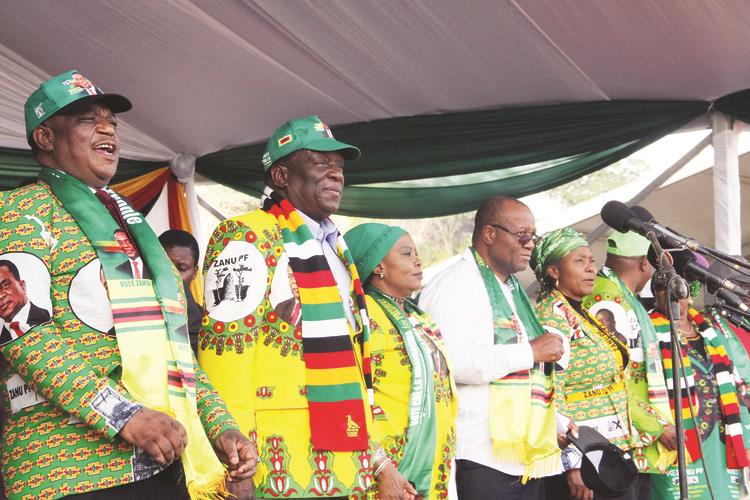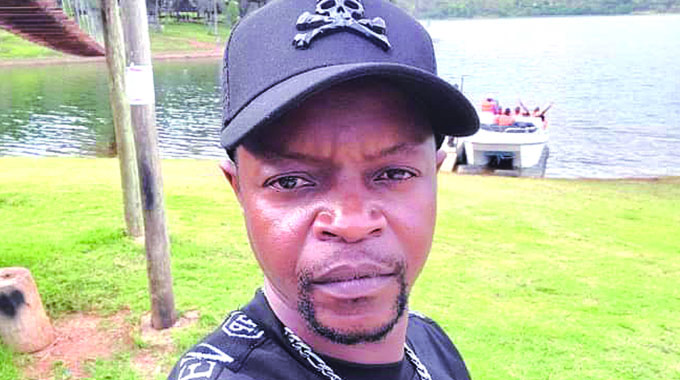Zim trio exhibits at Dakar Biennale

The 13th Dakar Biennale, popularly known as Dak’Art, has returned for its 2018 edition. With an upsurge in valuable content and context from Zimbabwe, this cycle of the Biennale has three artists appearing, namely Kudzanai Chiurai, Admire Kamudzengerere and Dana Whabira. The exhibition features “We Need New Names”, Chiurai’s 2017 showing at the National Gallery of Zimbabwe, 1972, Kamudzengerere’s time-space dislodge, and “Black Sunlight”, Whabira’s dissection of language and identity.

Dana Whabira
The rich chiaroscuro of Chiurai’s compositions placates the black body in transmitted environs. The viewer experiences a mis en scene that is synonymous with the High Renaissance, however, this localised pageant is rife with the nefarious tenets of contemporary African society and politics.
A plush floral theme imbues the spacing with a profound unity being developed from such; the scenes of the rubble, the clergy and the people in power, however, are unnerving and succinctly blunt as to the unequal distribution of wealth and sustenance. Leisure is juxtaposed with languor while the reversal of roles in leadership is projected with the ostracising of the conventional male associations and archetypes.
Delineation in Kamudzengerere’s photographs, on the other hand, is the main device to establish this period piece. The viewer is transported back to 1972 Rhodesia, where an interracial coupled named R. and A. are wed, with journeys around Rhodesia with their blended family.
The question runs down to the possibilities of the situation in Smith’s Rhodesia; would the couple have been made pariahs and be declared unpeople by the body politic of the day? Do the religious and cultural devices connected to the series of works, establish some form of truth or cement untruths in the message conveyed to the viewer?
Lambently connoted, Whabira’s installation dwells upon the exalted typeface from the raw scripture; selected as the best tool for the colonial project in the pursuit of erasing African identity. A mirror is held by the artist where in the Old Style inscription with a hope laden message reflects the formal that is confirmative of self-assurance and understanding.
The flourishes and mispronunciations of the colonial interpretation of the Shona language destroyed language in as much as it introduced an alien faith, therein the message in the medium presents the tipped scale that determines why most Africans are embattled in reclaiming their identities.
Twenty-eight years Ago, the Dakar Biennial of Arts and Letters was established as a roundtable platform for artists and writers to put their practices in perspective by insightfully exposing their successes and failures on and off the African continent.
Ultimately, the Biennale was geared towards the construction of a positive perception wherein the artist serves as an architect of their contemporary society.
The inclusion of these three artists intersperses with a plethora of artists from all over the continent and the African Diaspora; a relevant contribution to Césaire’s notion of the African’s self-assessment, criticism and actualisation in time. The concept of the eminent danger which is represented by the total obliteration of what Africanism they have, is embodied in the proximity of the hue and the measurement, or unit of time.
The musings of Aimé Césaire; co-proponent of the négritude school of thought, coined the phrase “Red Hour” with emphasis on reason, self-actualisation through the realisation that freedom had to be attained form the experiential past in order for a transition to the future to be pursued. The new avatar of the individual would be transcendental in the sense that a creative force would now be mantra charged to overcome the challenges of Western values.
The commonality of all three artists is the notion of identity; it occurs in fractured history, re-imagined pasts and the errors of tradition, once it is perceived from the alien lens. As a nation, Zimbabwe has had its pitfalls and as artists reflect upon them, they contribute to the Afropolitan discourse on identity in the current age, but how much has the local Zimbabwean populace observed that the very base on which education, society and heritage have been corrupted?
The three artists were invited to exhibit at the 13th Dakar Biennale; Kamudzengerere and Whabira generating interest from their showcase at the Zimbabwe Pavilion at the 57th Venice Biennale, where their works appeared under the show “Deconstructing Boundaries: Exploring Ideas of Belonging”. Chiurai’s show has travelled all over the continent and has also appeared under the title “We Live in Silence”.
The Red Hour will be on until of June 2, 2018 in Dakar, Senegal.








Comments